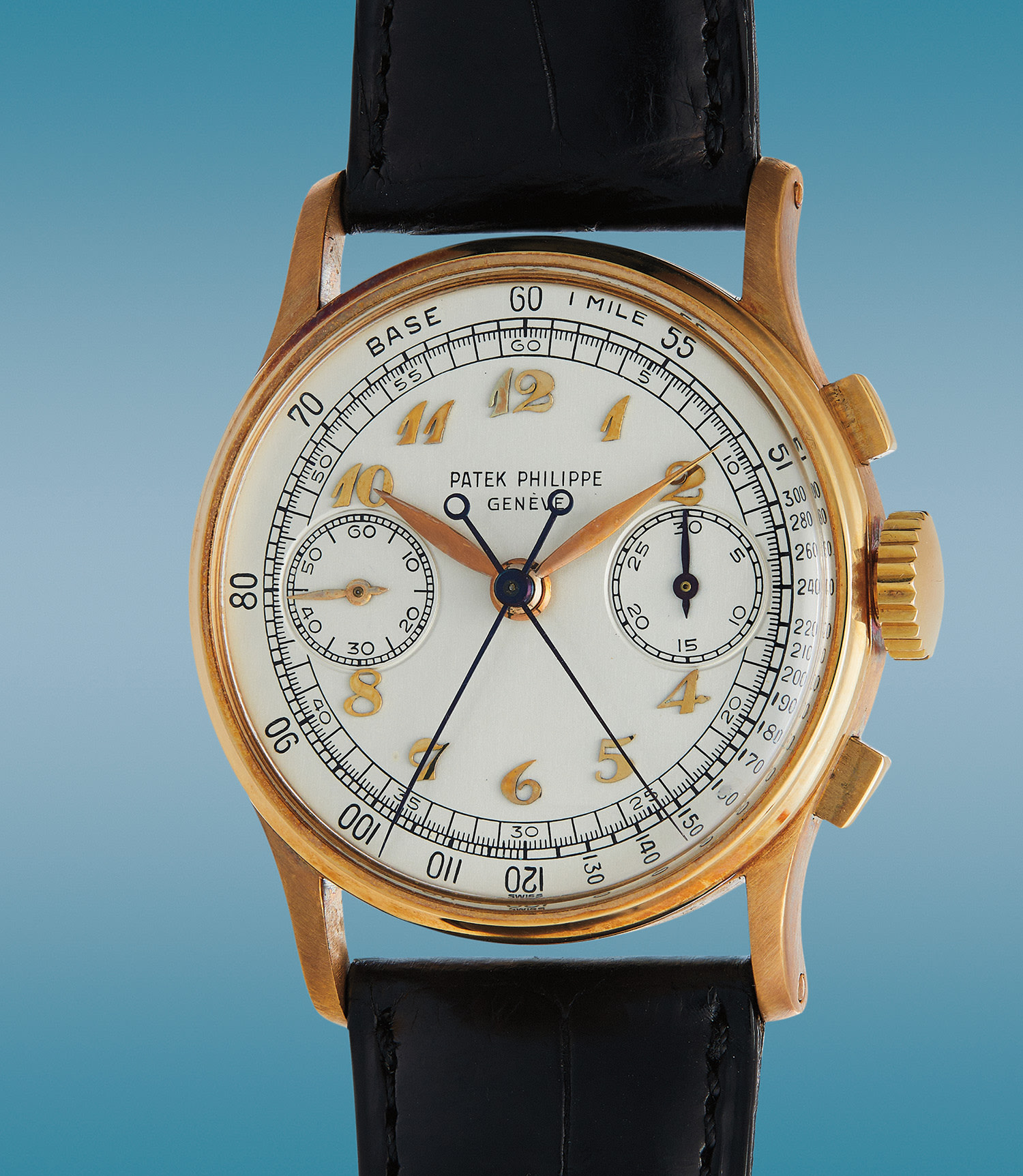
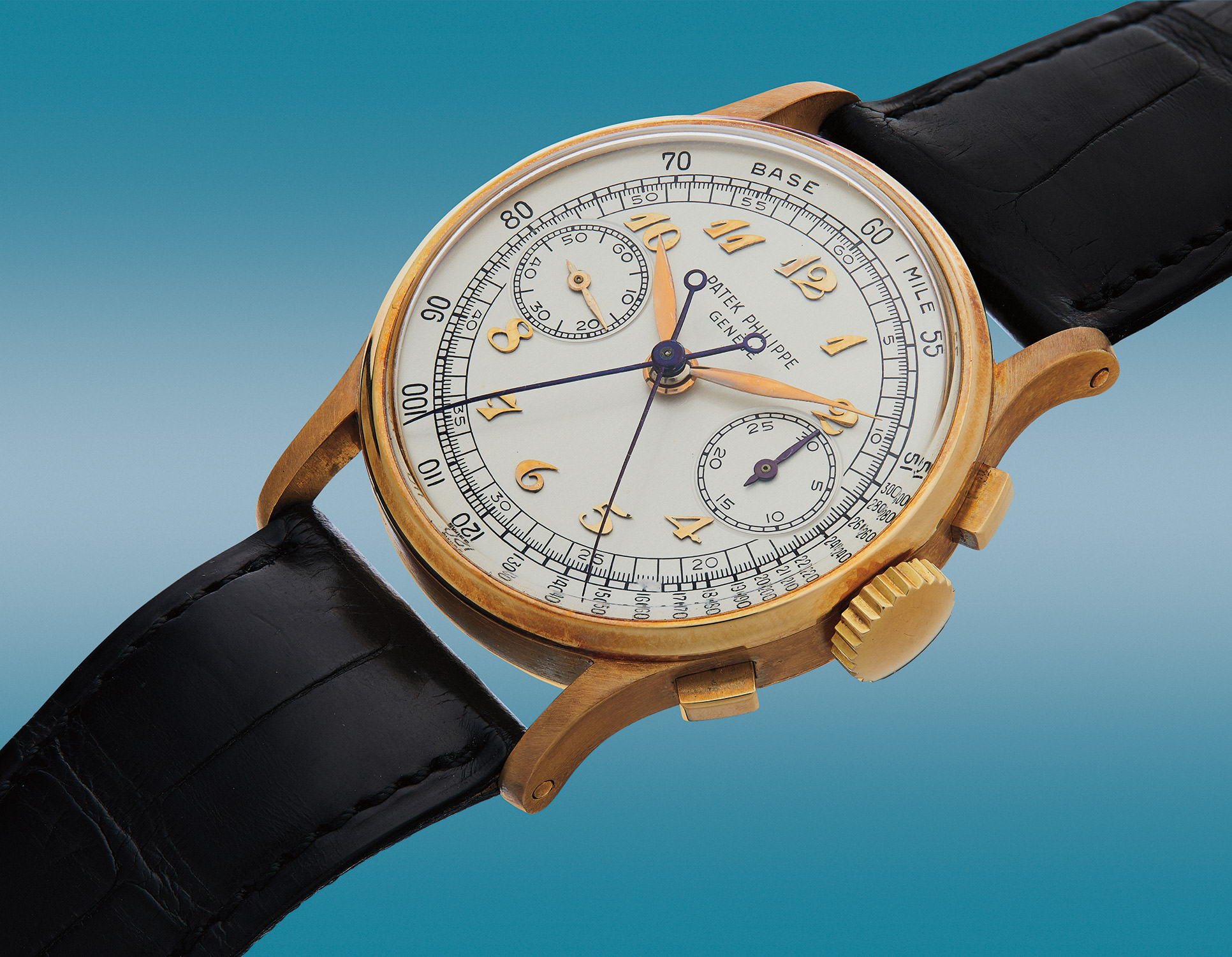

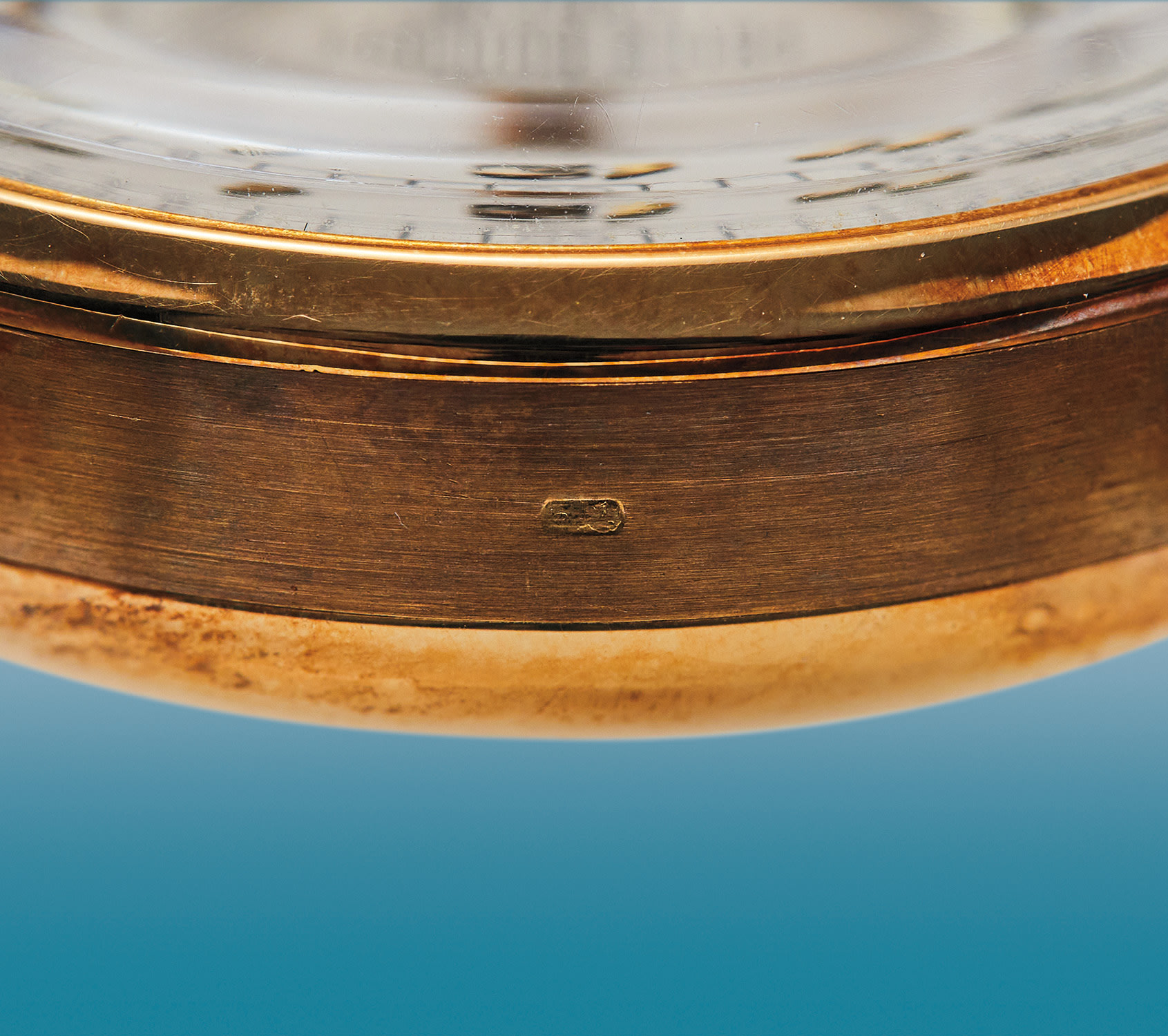
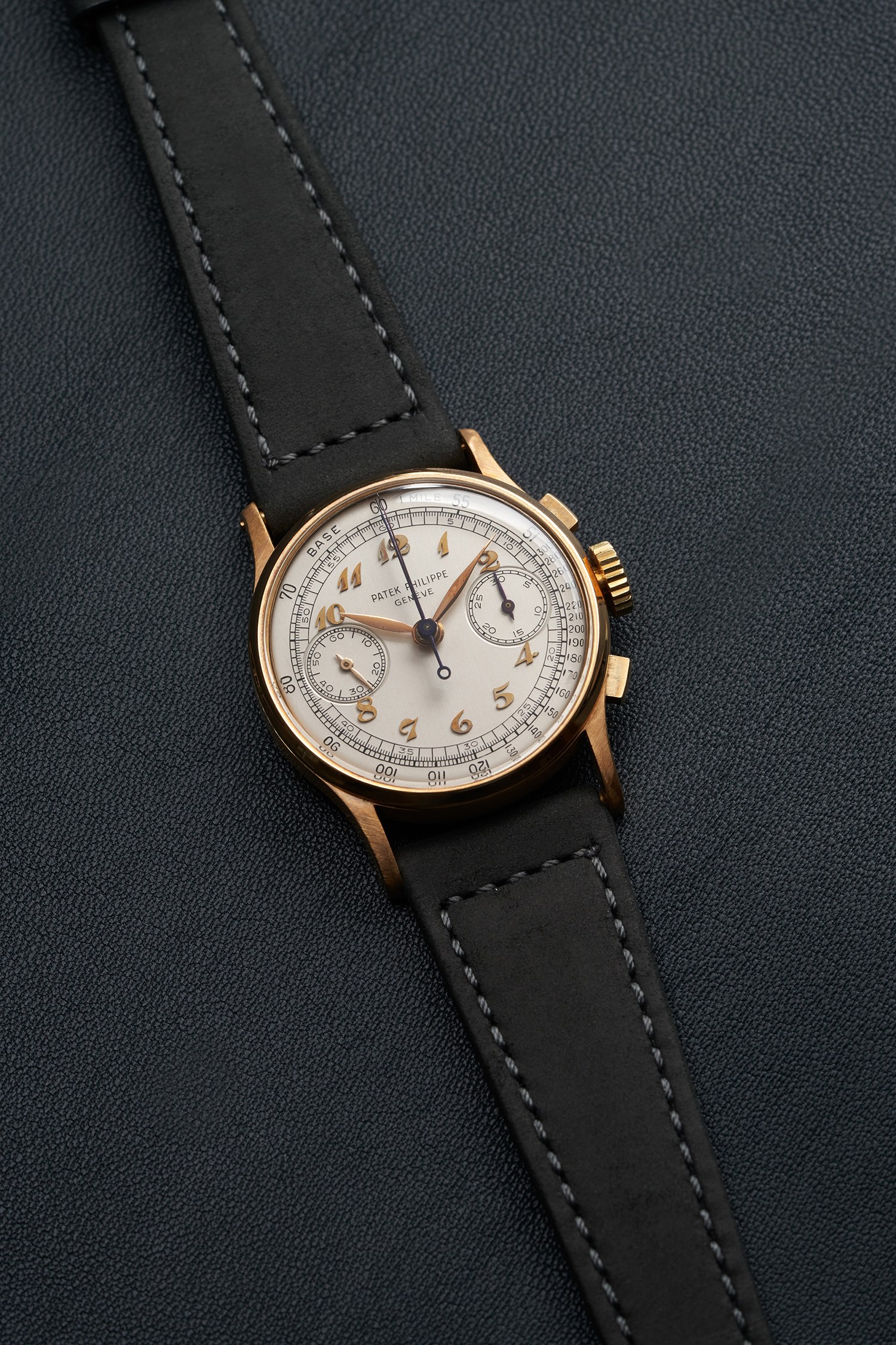
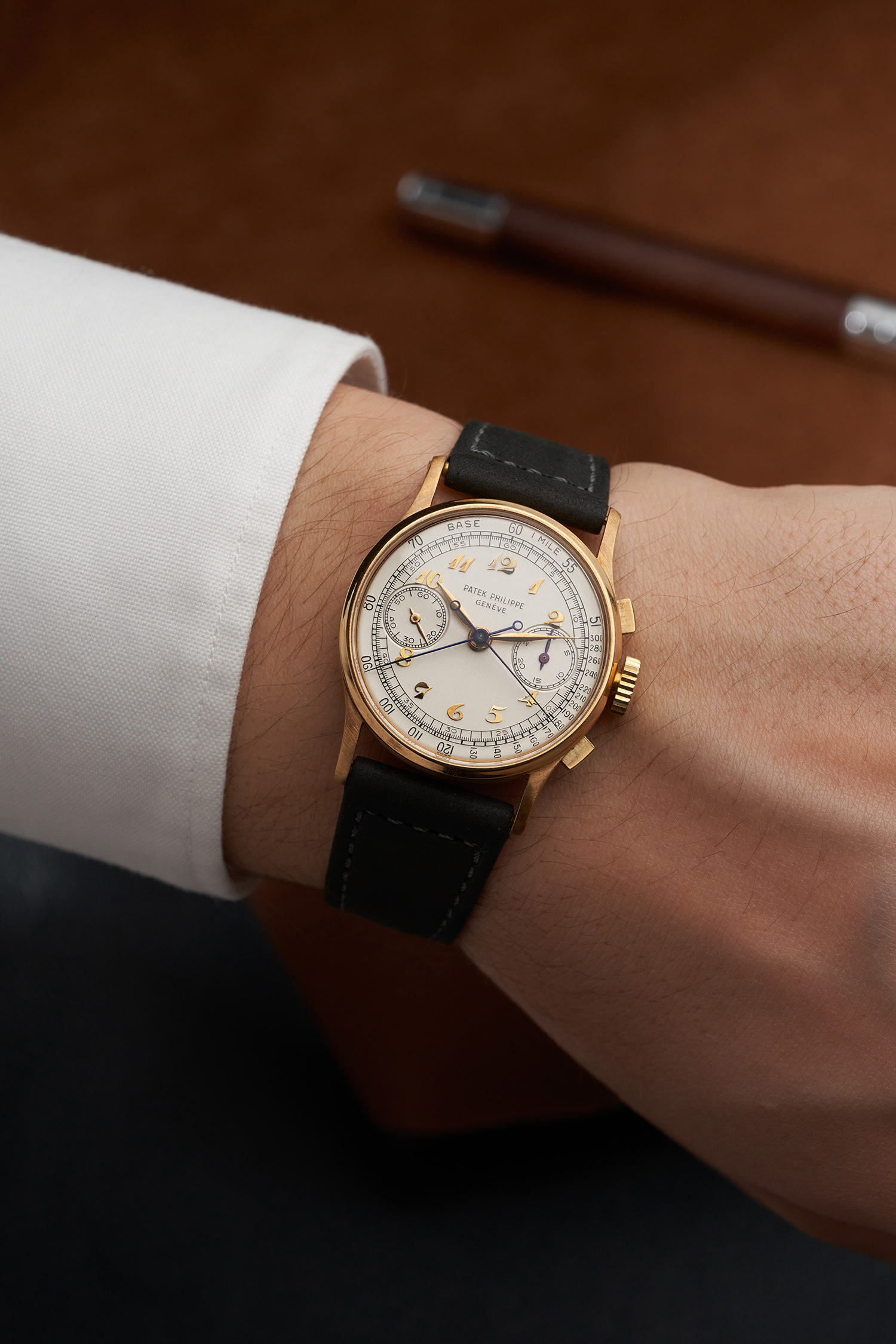






106Σ
Patek Philippe
Ref. 1436
An extremely fine, rare, and very well-preserved yellow gold split-seconds chronograph wristwatch with Breguet numerals
Full-Cataloguing
Introduced in 1938, the reference 1436 is considered one of the most elegant yet sophisticated references ever produced by the firm, with the rattrapante (split-seconds) chronograph mechanism housed within the confines of a 33 millimeter case. Research suggests approximately 140 examples were produced throughout the reference's approximate 33 years of manufacture, meaning an average of four watches were produced each year. This is an exceedingly limited number, even by the production standards of the mid-to-late 20th century. The present watch is one of only approximately 25 known examples to be encased in yellow gold. While the first-generation cases were produced by Emile Vichet, later generation cases, such as the present watch, were made by Ponti, Gennari & Cie.
This particular example is preserved in remarkable condition, with a strong hallmark between the lugs. The case has developed a beautiful layer of patina over time, and displays strong case proportions, and well defined lugs. When it was first offered on the market in 1996, it was fitted with a dial with applied Arabic and baton indexes. As the Extract from the Archives from 2004 specifies a dial with applied Breguet numerals, one can assume the previous owner wanted to return the watch to its original configuration as described by the extract, hunting down a dial with applied Breguet numerals and short Patek Philippe signature from the 1950s, matching the production date of the watch. Since its last appearance at auction twenty years ago with this dial, this watch has been cherished in the “Ride the Wave” collection, remaining unworn by the consignor until the present day.
Watch connoisseurs often place Patek Philippe’s references 1518 and 2499 perpetual calendar chronographs at the top of complicated timepiece grail lists, however the reference 1436 was for decades the brand’s most complicated timepiece during the early 20th century. Today, it is a legend amongst collectors, and this incredibly well-preserved example is a trophy watch for the connoisseur.
Patek Philippe
Swiss | 1839Since its founding in 1839, this famous Geneva-based firm has been surprising its clientele with superbly crafted timepieces fitted with watchmaking's most prestigious complications. Traditional and conservative designs are found across Patek Philippe's watches made throughout their history — the utmost in understated elegance.
Well-known for the Graves Supercomplication — a highly complicated pocket watch that was the world’s most complicated watch for 50 years — this family-owned brand has earned a reputation of excellence around the world. Patek's complicated vintage watches hold the highest number of world records for results achieved at auction compared with any other brand. For collectors, key models include the reference 1518, the world's first serially produced perpetual calendar chronograph, and its successor, the reference 2499. Other famous models include perpetual calendars such as the ref. 1526, ref. 3448 and 3450, chronographs such as the reference 130, 530 and 1463, as well as reference 1436 and 1563 split seconds chronographs. Patek is also well-known for their classically styled, time-only "Calatrava" dress watches, and the "Nautilus," an iconic luxury sports watch first introduced in 1976 as the reference 3700 that is still in production today.